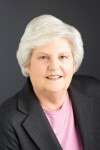AARP Hearing Center
Family Caregivers Are a Growing Industry in Healthcare
By Nancy A. LeaMond, October 24, 2022 11:14 AM

Every single day, 65,700 dedicated individuals join the ranks of family caregivers. From hard-working young people to aging relatives, they represent every generation and community, now numbering more than 50 million Americans.
It is no exaggeration to say that family caregivers are a growing class of healthcare providers, taking on tasks that once took place only in doctors’ offices and hospitals.
Yet, they are frequently unprepared for the job and should have more support.
Caring for wounds, giving injections, managing pain, running specialized equipment, and monitoring recovery after surgery are all part of today’s family caregiver job description. But new caregivers – those who have been providing care for six months or less may be plunged into tougher assignments with complex care needs. Newer caregivers are statistically more likely to care for someone needing hospitalization, dealing with multiple ailments, suffering broken bones, or fighting cancer.
And let’s not forget they also need to navigate how to guide loved ones through the health care labyrinth, coordinate appointments, and arrange transportation. Family caregivers advocate on behalf of their family and friends in need. They pay for services out of their own pockets. And they do all these tasks selflessly on top of the household and personal care they already provide their loved ones.
If we put a price tag on the sum of their unpaid efforts, it would be about half a trillion dollars.
For all these reasons, we are delighted that the Department of Health and Human Services recently released its strategy to support family caregivers, which identified hundreds of steps in the right direction for our nation. Prominent among the recommendations are proposals to include family caregivers in the hospital discharge process and to recognize them as members of care teams.
Much work remains, however, if we are to truly equip family caregivers with the know-how and assistance they need. Adults of all ages and backgrounds can find themselves thrust into the caregiving role, suddenly responsible for duties for which they have no experience.
One in two family caregivers is younger than 50. Six in 10 combine family caregiving with working at a paid job. Women comprise the majority of family caregivers, though many men embrace the task and account for about 40 percent of family caregivers.
In recent years, changes in health care and technology have added new complexities to their role, requiring caregivers to provide more and different care than they used to.
A push by hospitals to shorten hospital stays, encouraged by changes in surgical techniques and health care policy, has meant many patients are sent home with ongoing needs for care. At the same time, specialized medical equipment has turned people’s homes into centers of care.
Today’s caregivers are more likely to care for loved ones with long-term conditions, dementia and other memory problems, multiple ailments, and mental health issues. Research shows one in two family caregivers now perform medical and nursing tasks in the home – duties that can be time-consuming and challenging. Caregivers with medical responsibilities spend twice as much time giving care as those who do not. [To learn more, I recommend an excellent report by AARP’s Public Policy Institute on the challenges faced by family caregivers in the home, often with little outside support.]
It’s no surprise that these pressures can cause burnout. AARP research has shown that caregiving often causes mental strain and anxiety. When the role adds complex medical tasks to the mix, stress can soar, with about half of caregivers worried about making a mistake.
Yet, we know how to tackle this problem. When asked what would help, caregivers have said they need more instruction on medical tasks, such as useful videos and other educational materials, and phone numbers where they can get answers. Guidance, they point out, should start when a patient is still in the hospital – not afterward when the caregiver is isolated at home.
AARP is listening. We have long fought for family caregivers to get the assistance they need and deserve. We championed the Caregiver Advise, Record, Enable (CARE) Act, which requires hospitals to put a family caregiver’s name on the patient’s medical record and instruct the caregiver on medical tasks they may have to perform. The CARE Act has become law in 45 U.S. states and territories. And we will keep advocating for it to cover the entire country, along with other policies to recognize the vital role of caregivers.
AARP has also gathered a tremendous amount of information for the public, including guidance for new caregivers and links to resources for caregivers in different regions of the United States.
































































